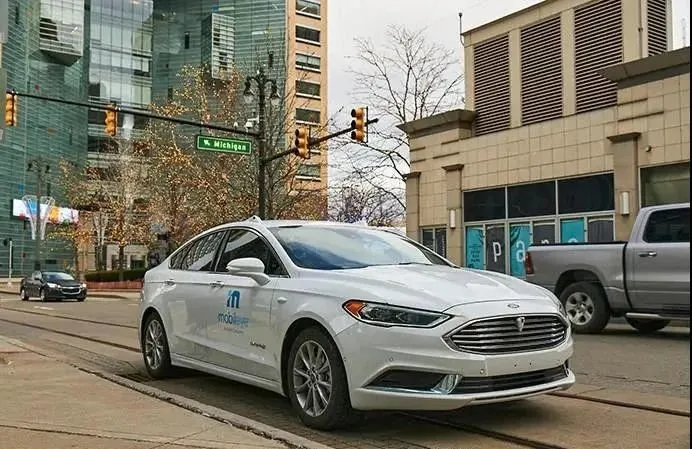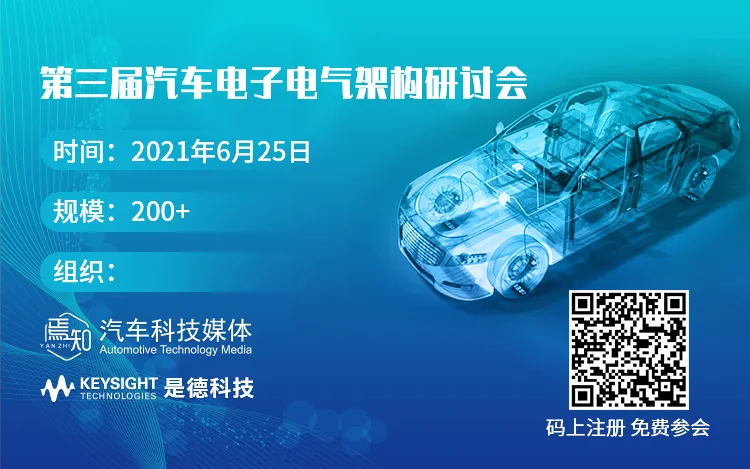*Author: Timothy B.Lee
This article makes eight predictions about the future winners of the self-driving car race. However, it’s possible that everyone wins or no one wins at all.
The self-driving technology industry is currently in a strange state. For many years, the entire industry has invested a huge amount of funding in self-driving technology, with many companies having prototypes of self-driving cars that seem to be running relatively smoothly.
However, to my knowledge, only one company, Waymo, has launched a fully driverless commercial taxi service, and only one company, Nuro, operates a driverless commercial delivery service on public roads.
You might think that these companies could expand rapidly, taking full advantage of their early lead, but they don’t seem to be doing so.
Meanwhile, other players in the self-driving industry, including Cruise and Mobileye, have announced plans to launch large-scale commercial services by 2023.
However, many self-driving companies have repeatedly postponed their previously announced release schedules, so it remains uncertain whether these companies’ plans can be realized.
In short, predicting progress in the next few years is a challenge. So, instead of making one prediction, this article makes eight predictions: I break down the future into eight possible scenarios, each with a high probability of occurrence. I hope that this prediction method can well demonstrate the various strategies adopted by today’s self-driving companies.
In ten years from now, we will be able to look back and see which companies or methods are on the right track today. But for now, all we can do is guess.
Waymo Wins (20%)
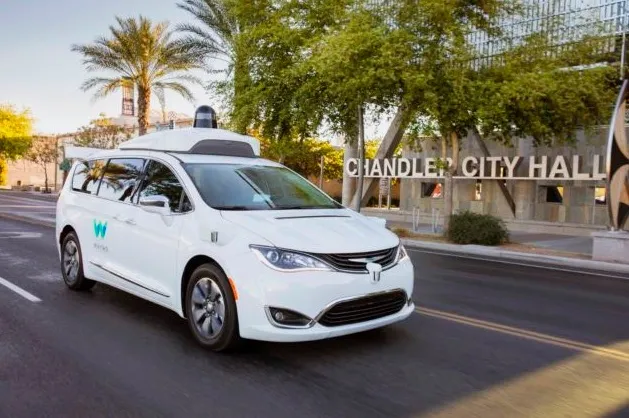
In an optimistic scenario, Waymo will maintain and expand its current lead. It will expand its driverless taxi service from a corner of the Phoenix metropolitan area to the entire Phoenix metropolitan area, and then steadily expand to other metropolitan areas.
Operating the largest driverless taxi service can give Waymo more driving data and operating experience than any other company, allowing it to further improve its software and maintain its lead.
So why am I only giving Waymo a 20% probability? Although Waymo still looks like a technological leader, it has not taken full advantage of its lead as expected by many people, including apparently its own leaders, a few years ago.# Translation
In 2018, Waymo announced the purchase of “up to” 82,000 cars to expand its fleet of taxis, indicating the company believed it was on the eve of massive commercial expansion. However, today, its fleet only consists of hundreds of cars.
I am not sure why Waymo is progressing so slowly. Perhaps they have optimized their software too much for the suburbs of Phoenix; maybe their hardware or backend support costs are too high to be profitable; or Waymo wants to address some long-standing safety or reliability issues before embarking on a large-scale expansion.
But whatever the problem may be, it is unlikely to disappear quickly, giving other companies hope.
Another autonomous taxi company will win (25%)
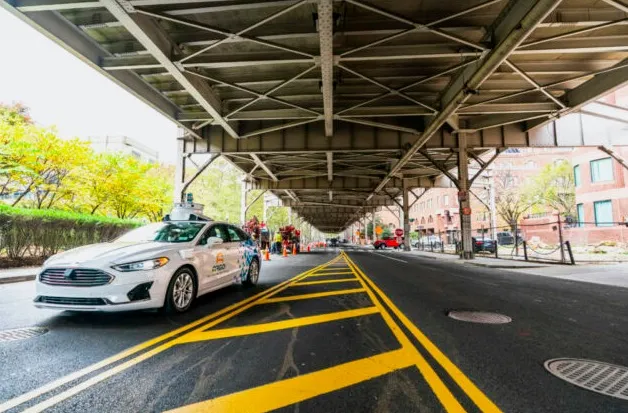
Many companies are pursuing the same basic strategy as Waymo, namely to build and operate a fleet of autonomous taxis. These companies include:
-
Cruise (owned by General Motors, Honda, etc.)
-
Argo (owned by Ford and Volkswagen)
-
Motional (owned by Hyundai and automotive parts supplier Aptiv)
-
Zoox (a startup recently acquired by Amazon)
-
Aurora (a startup recently acquired by Uber’s autonomous driving program)
If Waymo fails, I think the problem is most likely to be in business execution: Waymo still possesses leading technology in the industry, but it cannot quickly expand to fully leverage it. Operating a fleet of several hundred taxis in a metropolitan area is a far cry from operating hundreds of thousands of taxis in dozens of cities.
Companies supported by automakers, such as Cruise, Argo, and Motional, may have greater capabilities to rapidly scale up the production of autonomous cars. Amazon clearly has extensive experience in handling large-scale logistics problems. And Aurora has a close relationship with Uber, which may offer Aurora priority access to its rental car network.
Tesla (and Comma.ai) will win (5%)
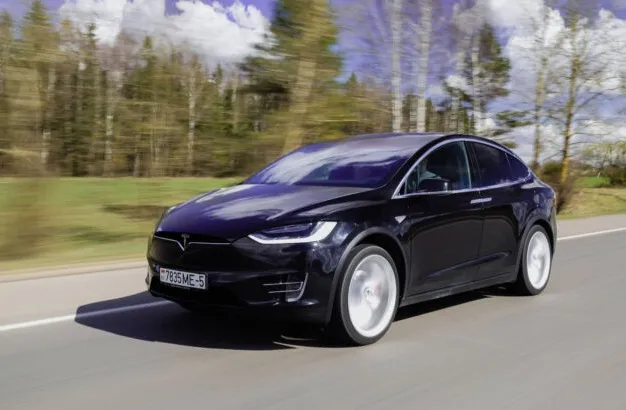
This will excite Tesla fans, but I think it is indeed possible: Tesla has a long-term advantage.
Tesla will win if it can acquire a large amount of real-world driving data from customers’ vehicles. If you believe that insufficient training data is the main bottleneck in improving autonomous driving algorithms, then this may be a significant advantage for Tesla.Compared with other companies that are researching autonomous driving technology, Tesla’s CEO, Elon Musk, has a greater appetite for risk. Musk is willing to use unvalidated technology on the road, which may accelerate Tesla’s development despite the increased risk of fatal accidents.
On the other hand, Tesla also has some obvious disadvantages. Its business model (selling cars to end users) means that the deployment of LiDAR sensors and high-density maps may be difficult due to financial factors.
Elon Musk tried to portray this situation as positive by saying that LiDAR is a “crutch.” But the fact is that almost all other companies are using LiDAR and high-definition maps because they believe it is useful.
To be more frank, if you look at the videos of Tesla’s software in practice, it is difficult to conclude that Tesla is in a leading position, let alone that they are catching up with the leaders. Tesla’s software, called “Full Self-Driving Beta” (unfortunately, they chose this name), often makes mistakes in scenarios that Waymo’s cars could handle years ago.
If I am wrong and Tesla’s strategy does indeed succeed, it would be good news for Comma.ai. This is an autonomous driving start-up founded by legendary hacker George Hotz. Comma is building an open-source autonomous driving system designed to run on smartphones.
Comma’s strategy is to enable early adopters to retrofit their cars to obtain steering input from Comma’s smartphone-based software, and then use the data collected from early customers to further improve the software, which is basically the same method as Tesla.
Like Tesla, Comma also avoids LiDAR, believing that smartphone-level cameras can achieve sufficient performance.
If Tesla becomes the leader in autonomous driving technology, other car manufacturers will need to purchase autonomous driving technology licenses to compete with Tesla. Hotz hopes that Comma’s software will become the industry standard for car manufacturers, just as Android is the industry standard for non-Apple smartphones.
Mobileye (and its partners) Wins (10%)
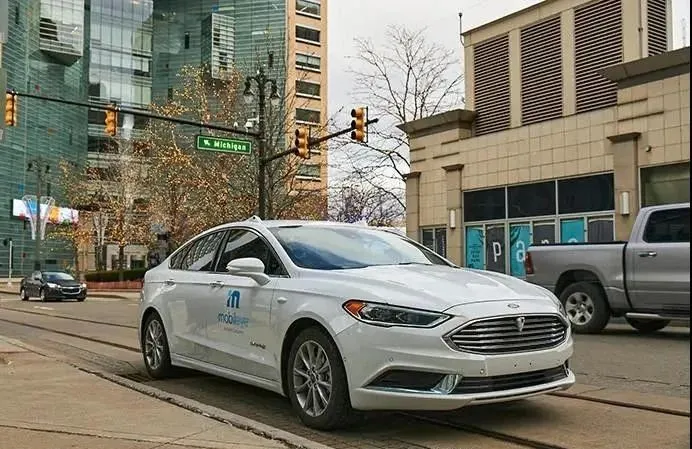
Mobileye, the Israeli company that Intel acquired in 2017, has some notable advantages. As a leading provider of Advanced Driver Assistance System (ADAS), Mobileye has cooperation agreements with many car manufacturers.The company utilizes these relationships to obtain data from numerous customers’ vehicles, thus enabling Mobileye to accumulate a vast amount of real-world road data. Mobileye’s dominant position in the ADAS market has also allowed it to amass a wealth of engineering talent.
Like Tesla, but unlike Waymo and other companies, Mobileye believes that the industry can achieve full autonomy by gradually improving ADAS. Mobileye hopes to provide increasingly superior ADAS until the point where customers can relax and take a brief nap in the driver’s seat.
At the same time, Mobileye is not constrained by financial constraints like Tesla. With the support of its parent company Intel, Mobileye has the resources to explore multiple technological approaches simultaneously. Like Waymo, Mobileye is testing laser radar and fully autonomous driving technology on public roads with a safety officer sitting behind the wheel during testing.
Mobileye’s plan is to license its chips, sensors, and software to a variety of customers. Therefore, if Mobileye’s technology proves successful, it could allow some smaller companies to have a chance to try it out.
For example, Udelv, a delivery service startup, recently announced plans to use Mobileye’s technology in at least 35,000 delivery robots between 2023 and 2028. Mobileye hopes to have dozens of customers like Udelv within a few years.
Industry Favorite?
Mobileye’s victory would also be good news for other automakers because it means that they are less likely to be suppressed by Waymo, Tesla, or other up-and-coming players.
Mobileye’s main business is providing technology licenses to automakers, so if Mobileye develops a leading autonomous driving technology stack, automakers should be able to easily integrate it into their existing product lines.
Mobileye has released some impressive technology videos. However, it’s difficult to gauge the level of autonomous driving technology development based on just a few videos. Many companies have released impressive videos, but most companies do not have enough confidence in their technology to launch autonomous driving commercial services.
Mobileye’s business model (licensing its technology to various customers ranging from automakers to operating delivery truck fleets) may also hinder the company’s development. Developing autonomous driving technology for a specific application alone is difficult enough. Mobileye hopes to develop a single technology stack that can operate well in various application scenarios, which may be unrealistic.
China Wins (15%)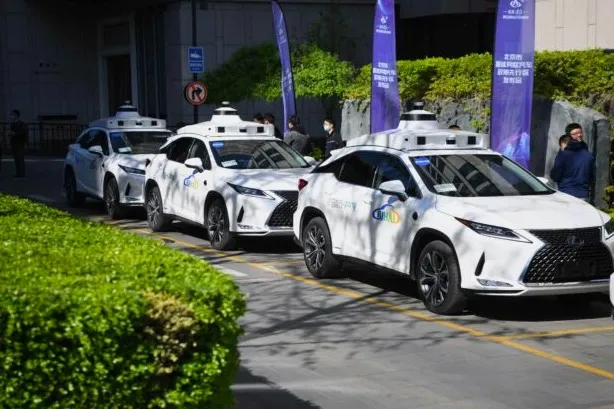
There are many international cooperation projects in the field of autonomous driving, and overseas companies such as Honda and Volkswagen will invest in autonomous driving projects in the United States, while Intel has acquired Mobileye in Israel. But basically, China is playing by itself.
China has some stable autonomous driving companies, whose progress is largely independent of Western countries. China’s leading autonomous driving companies include AutoX, Pony.ai, WhereIsWay, search giant Baidu, and ride-hailing company Didi Chuxing.
In December of last year, AutoX became the first company in China to test fully autonomous vehicles on public roads, although this was only a pure technical test, not commercial autonomous driving services.
As I have not read many reports about these companies, I cannot delve into their prospects. But basically, it is clear that if US autonomous driving companies face serious overseas competition, this competition is most likely to come from China. (Apart from China and the United States, the most powerful foreign companies may be Yandex in Russia.) Theoretically, the highly centralized and competent Chinese government can find ways to accelerate the development of domestic autonomous driving technology, such as establishing supportive infrastructure or giving companies more freedom.
But so far, Chinese companies don’t seem to be significantly ahead of American companies, so I don’t think this possibility is so great.
Autonomous Trucking Winning (5%)
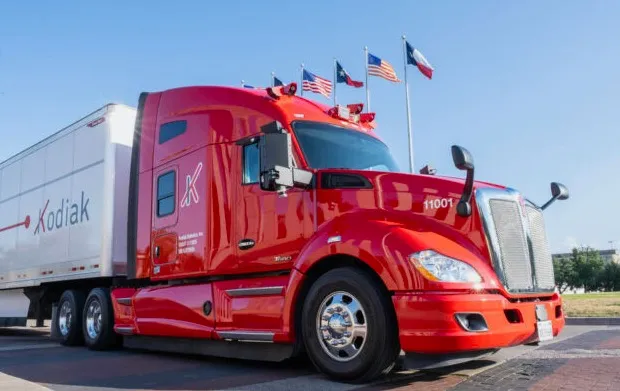
Companies such as Kodiak, Embark, and TuSimple focus on automating long-haul freight routes. Another two companies (Waymo and Aurora) are hedging their bets, researching truck and taxi projects simultaneously. Nuro, a delivery startup that I will discuss in detail later, also joined the long-haul trucking industry last year by acquiring Ike.
Some of these companies are designing systems that only operate autonomously on highways. In this mode, the driver will drive the truck to a nearby transfer station, and then the trailer will be transferred to the autonomous truck.
The unmanned truck will tow the trailer on the highway to another city, and then the trailer will be switched to another manned truck, which will complete the final few miles of complex city roads and transport the goods to the final destination.This mode has many advantages. Highways are controlled environments, typically with no pedestrians, cyclists, or other obstacles. They are usually well-marked and have no complex intersections. These factors could make the task of automating highway driving relatively straightforward.
In theory, companies could take the data and experience gained from early success with autonomous trucks and apply it to other markets, eventually becoming leaders in various autonomous driving applications.
However, I remain skeptical of autonomous trucks for one simple reason: while highways may be easier to navigate on some level, the potential cost of failure is very high. A fully loaded semi-truck that goes out of control at 70 miles per hour could cause enormous damage. And there is no good way to gradually test this technology.
These companies will eventually have to hit the button and let trucks drive themselves at highway speeds. I doubt anyone will have enough confidence to take on this risk in the short term, or that regulators will be willing to take on this risk.
Delivery Robots Win (10%)
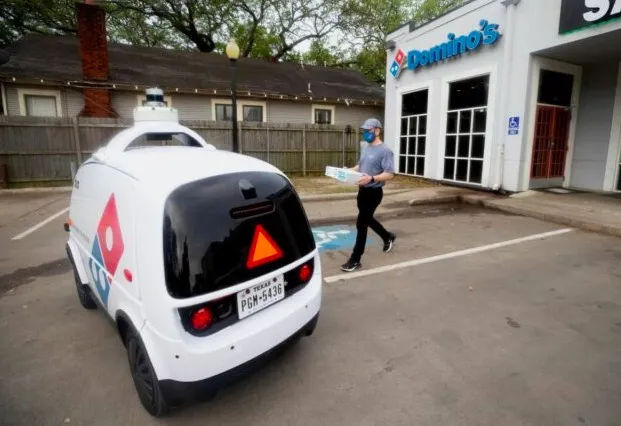
Nuro is another company that plans to deliver goods rather than people. But instead of automating large freight trucks on highways, Nuro has developed small, low-speed delivery robots optimized for residential streets (Nuro’s vehicles are bigger and faster than sidewalk robots).
This is an attractive initial application for autonomous vehicles because small robots traveling at a maximum speed of 25 miles per hour (40 km/h) are unlikely to kill anyone.
Two years ago, I argued that start-ups like Nuro, which focus on low-speed scenarios, might beat Waymo. The other start-up I mentioned in that article was Voyage, which is developing low-speed taxi services in a retirement community in Florida.
I believe that focusing on low-speed operations in controlled environments will greatly simplify technical challenges, allowing these companies to enter the market earlier than companies attempting to operate full-speed taxi services in entire cities.
Once these companies have mastered autonomous driving technology in simple scenarios, I think they can use the data and operations experience they have collected to push into higher-end markets and eventually defeat companies that focus on more challenging driving tasks, such as Waymo.
This prediction is not quite playing out as expected. Indeed, Waymo is struggling to push its technology to market at scale, but it remains to be seen whether start-ups like Nuro and Voyage can do better. Voyage was acquired by Cruise earlier this year.Nuro remains an independent company and appears to be growing. However, Nuro’s situation seems similar to Waymo’s.
For example, earlier this week, Nuro launched a pilot project to deliver Domino’s pizza – a partnership that was first announced in 2019. Like Waymo, Nuro seems to be on the eve of large-scale commercial operations, but dawn has been going on for two or three years.
This does not necessarily mean that Nuro will do anything wrong, but it may just take years of practice to get the self-driving delivery vehicle running. But this rate of progress does indicate that focusing on low-speed delivery robots is not a shortcut to commercialization.
Nevertheless, Nuro remains one of the few companies that truly operate commercial autonomous driving services. And it may slowly accumulate experience, which will allow it to expand rapidly in the next few years. If Nuro does indeed succeed, it could be good news for Zoox.
Although Zoox is primarily focused on building a taxi service, it can easily pivot to building driverless delivery vans for its parent company Amazon. In addition, if Nuro succeeds, we can expect many other companies building autonomous driving technology stacks to consider Udelv as a potential partner or acquisition target.
Other winners (10%)
The tech market always has a way of surprising us. Perhaps there are some start-ups that I haven’t noticed yet that are destined to embarrass these well-funded companies.
Another possibility is that “everyone wins.” Perhaps autonomous driving is not one problem, but a series of separate problems, each requiring a carefully designed technology stack to solve.
Perhaps self-driving taxis, autonomous vehicles, and self-driving trucks are three separate markets, each of which will be dominated by their own group of companies. Perhaps early versions of this technology will require a lot of human supervision, and we will gradually transition from human-driven vehicles to driverless ones. I think this outcome is unlikely, but it cannot be ruled out.
Another possibility is that no one will win: even after years of setbacks, autonomous driving is still a more difficult problem than people imagine, and it will take decades rather than years to solve.
In that case, we may be heading into another “AI winter,” and many companies will scale back their research in this field. Again, I think this outcome is unlikely, but it cannot be ruled out.
About the author
Timothy B.Lee is a senior reporter whose coverage includes technology policy, blockchain technology, and the future of transportation. He lives in Washington, D.C.
This article is a translation by ChatGPT of a Chinese report from 42HOW. If you have any questions about it, please email bd@42how.com.
